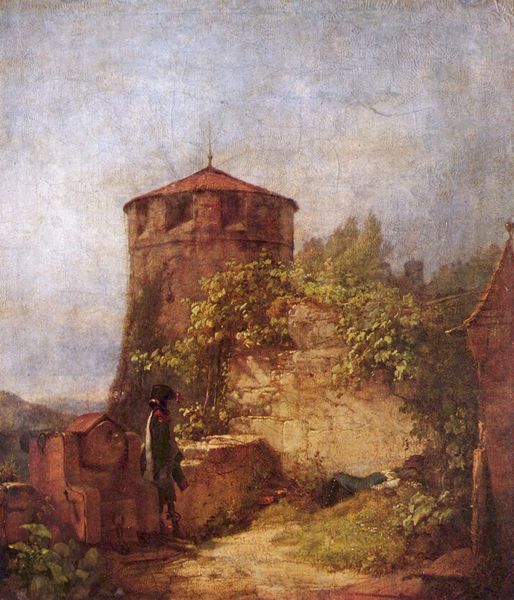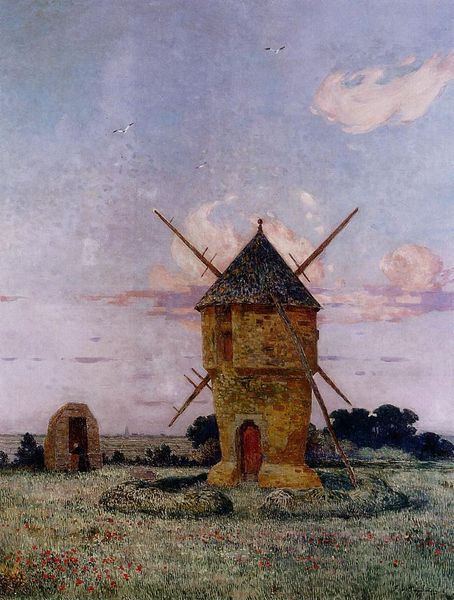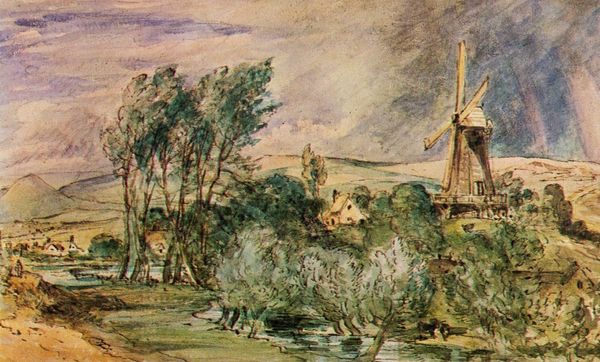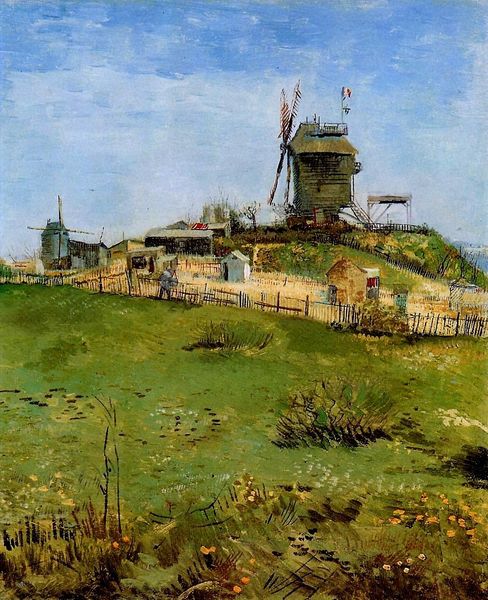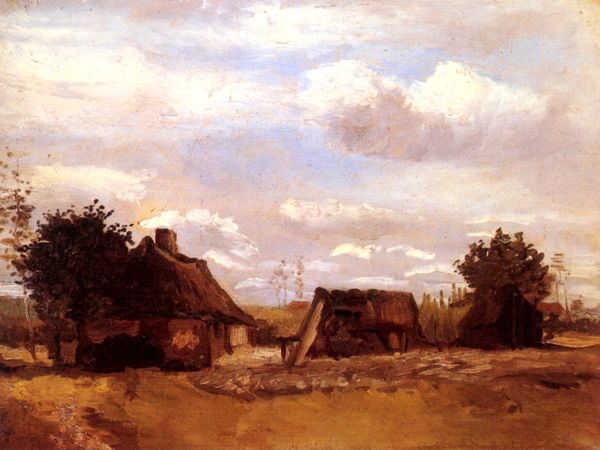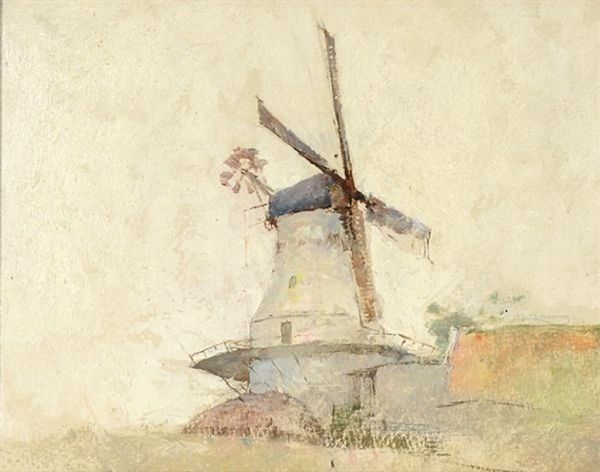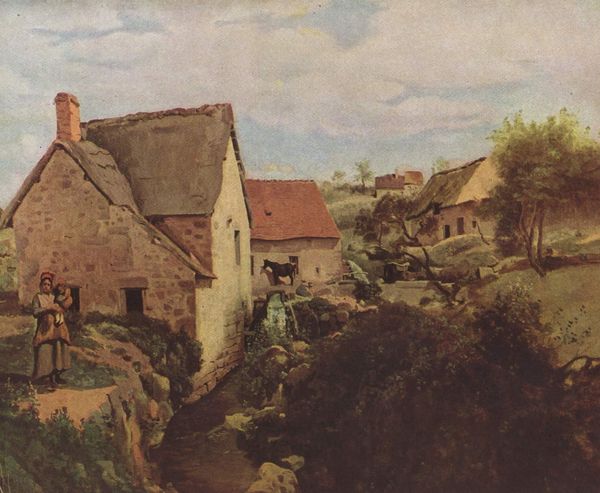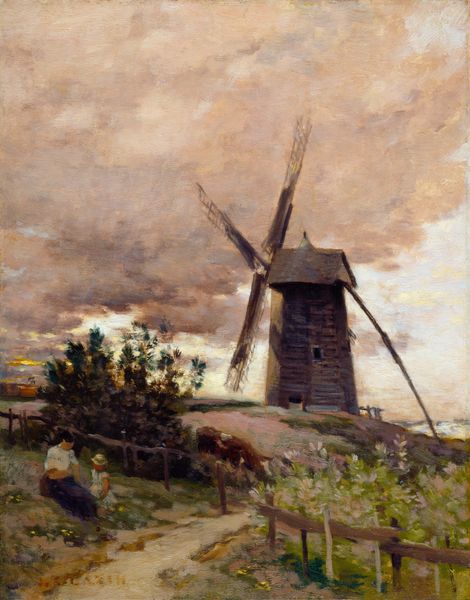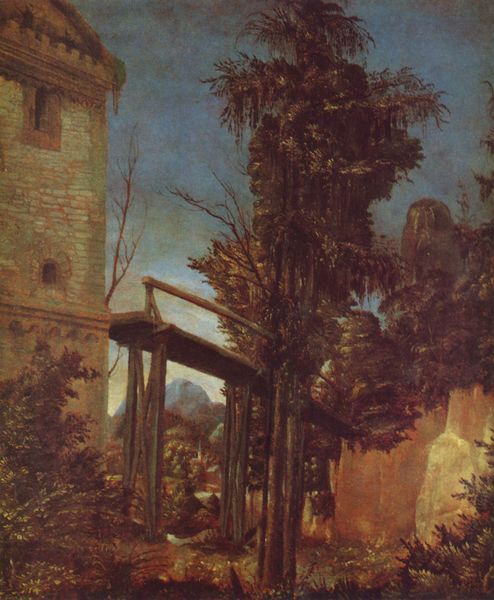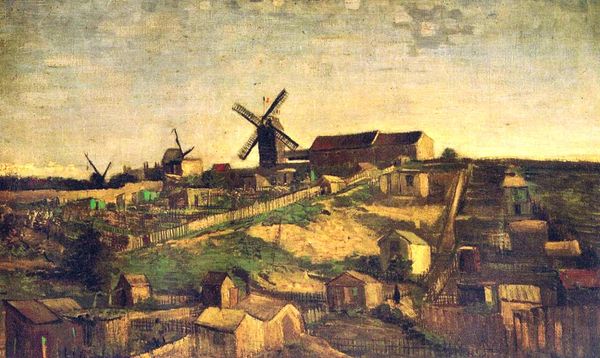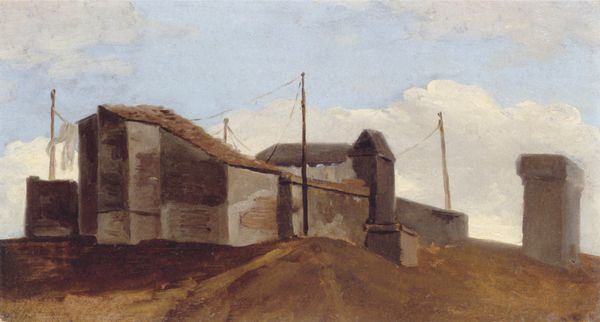
Le Moulin de la Gallette 3 1886
0:00
0:00
vincentvangogh
Kelvingrove Art Gallery and Museum, Glasgow, UK
painting, oil-paint
#
narrative-art
#
painting
#
impressionism
#
oil-paint
#
landscape
#
impressionist landscape
#
cityscape
#
post-impressionism
#
mixed media
#
modernism
#
watercolor
Dimensions: 46 x 38 cm
Copyright: Public domain
Curator: This is Van Gogh's "Le Moulin de la Galette 3", painted in 1886. It's currently held at the Kelvingrove Art Gallery and Museum in Glasgow. Editor: It feels… unsettled. The windmill looms, the sky swirls. There's a distinct lack of peace in this Parisian scene. Curator: I think that's astute. Consider the application of paint. See how thick and textured it is? The material handling itself communicates a sense of energy and anxiety, the kind symptomatic of a rapidly industrializing Paris, impacting leisure and the local economies that sustain them. Editor: That’s a compelling reading. I’m drawn to the windmill itself, its wooden structure, crowned with French flags. Windmills have been symbolic of progress and industry. But, in art, also futility since Don Quixote, especially when surrounded by green space – signaling nature’s persistence. Does Van Gogh show these traditional rural images falling into decay amidst a changing world? Curator: Perhaps, although he would have surely observed its active usage as a cafe. So how might the context of art production in Paris relate? Van Gogh arrived there and became influenced by Impressionists. A scene such as this indicates new industrial processes creating cheaper paint and portable easels that allowed him and other Impressionists to record observations in natural light, in real-time. Editor: Yet, it's his unique rendering of light that’s so affecting. He is a post-Impressionist after all! The contrast is bold; how the buildings feel solid but their forms shimmer. Van Gogh evokes the atmosphere of a bustling Parisian social scene with its own weight, as well. Curator: Right. Also look closer at the labor required to create this type of urban leisure. From timber, textiles, food and drink all for entertainment— what resources were depleted? Who benefitted? To produce images of Paris required certain types of global trade that artists are very much part of. Editor: This makes me reflect on those gathered on the platform connected to the mill; almost like spectators in the modern city—they’re searching for enjoyment, a good view, which is what this art provides the viewer today. So this painting continues to present its own reflections of that modern condition. Curator: Yes, an image reflecting leisure itself reveals so much about a moment in production! Editor: Quite insightful; it seems we’ve both uncovered something deeper about this work today.
Comments
No comments
Be the first to comment and join the conversation on the ultimate creative platform.
